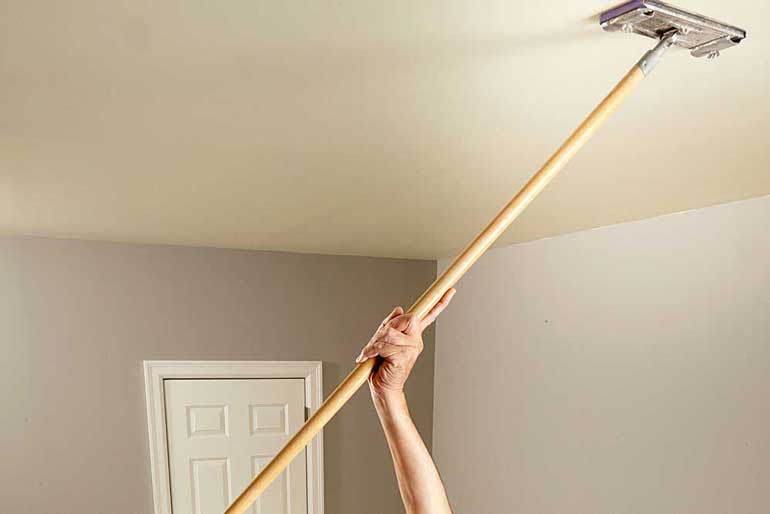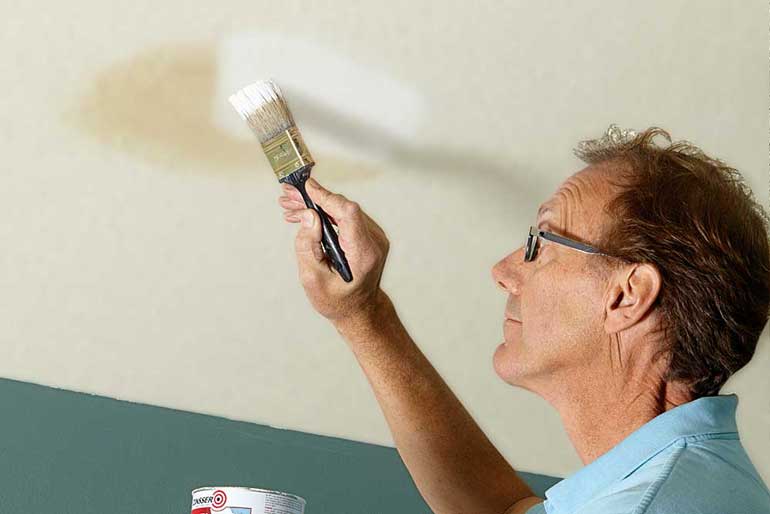Painting ceilings

They’re usually much larger than a single wall and are often illuminated with raking light that accentuates even the smallest flaws, which means ceilings present some unique painting challenges.
Add to that the difficult task of working overhead and things can get messy in a hurry, so we’ve grilled a pro to help you get the best result.
Bill Nunn is the owner of William Nunn Painting, which specialises in painting older houses.
We’ve called on his 35 years of experience in the business to find out the best ways to paint a ceiling, so you get a top-quality finish every time.
1. Sand before painting

Over time, and as the layers of paint build up, lumps and bugs can get stuck to the ceiling.
On ceilings that aren’t textured, start with a quick once-over, sanding with 100 grit abrasive paper.
This helps ensure a perfectly smooth paint job and also increases paint bonding.
Use a sanding pole to make working easier, then wipe the ceiling afterwards with a damp sponge to remove the dust.
2. Use a good primer

Roof leaks, overflowing sinks and tobacco smoke can all leave ugly stains that are hard to conceal with regular ceiling paint.
Apply stain-blocking primer to cover any stubborn ceiling marks.
Try Zinnser Smart Prime, which is formulated for this purpose and water-based for easy application.








